
PUBLICATIONS CENTRE

DEBT PAUSE CLAUSES CONFRONT THEIR FIRST DISASTER: FROM HURRICANE BERYL TO BROADER POLICY MOMENTUM
This policy brief examines the first real-world use of debt pause clauses - contractual mechanisms that allow sovereign borrowers to temporarily defer debt payments in the wake of a disaster. Following Hurricane Beryl in 2024, Grenada and St. Vincent and the Grenadines became the first countries to trigger these clauses, securing vital liquidity to support their crisis response. The brief explores how the clauses functioned in practice, their relationship with other financing instruments and offers critical guidance to improve how these instruments are designed, implemented and scaled as momentum builds toward broader adoption.
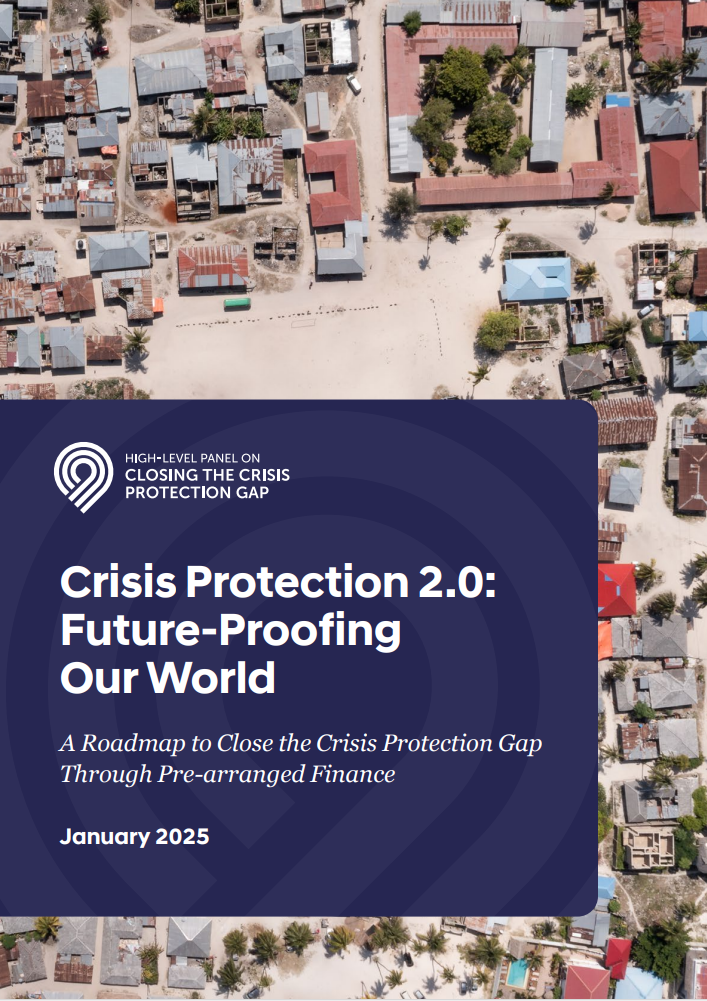
CRISIS PROTECTION 2.0: FUTURE-PROOFING OUR WORLD
The High-Level Panel on Closing the Crisis Protection Gap formed in January 2024, comprising 20 expert members from across sectors and geographies, united by the conviction that national and international crisis, climate and development financing architectures are at a critical juncture. This report delivers the High-Level Panel on Closing the Crisis Protection Gap’s call to action - that now is the time to comprehensively rethink how the world financially prepares itself for and responds to crises. The Crisis Protection 2.0 report outlines ten strategic recommendations and an ambitious roadmap for the next decade.
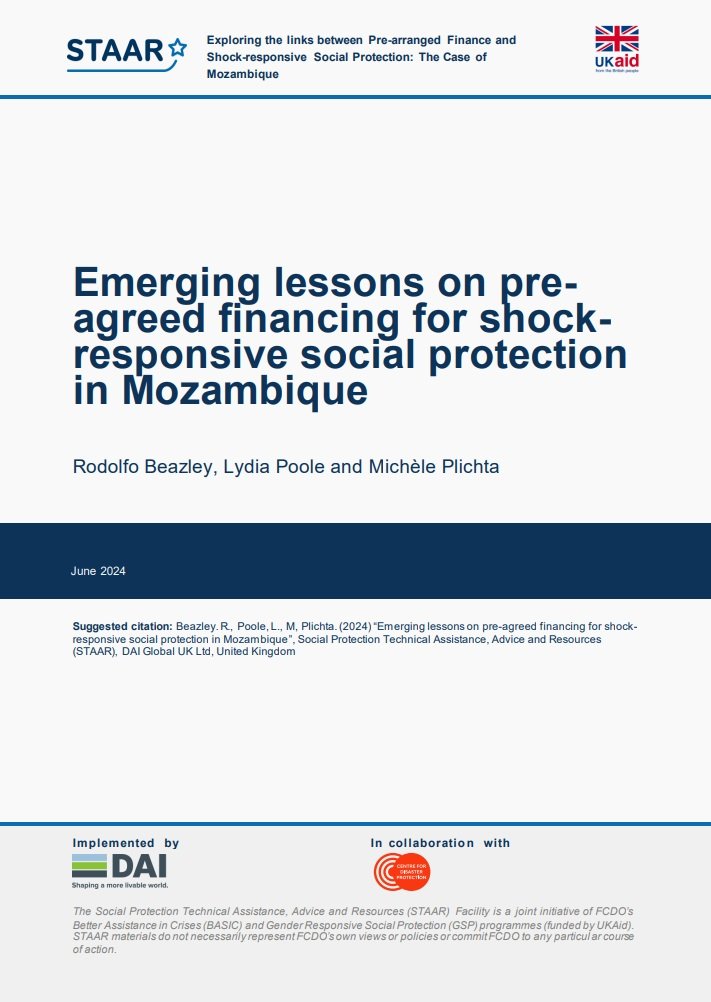
Emerging lessons on pre-agreed financing for shock-responsive social protection in Mozambique
This study, conducted by the Centre for Disaster Protection in collaboration with the Social Protection Technical Assistance, Advice, and Resources (STAAR) Facility, investigates the potential opportunities, benefits and risks when linking disaster risk financing (DRF) and shock-responsive social protection (SRSP) in Malawi. The report contributes to a broader study that includes research across three country case studies (Jamaica, Malawi, and Mozambique) to consider the opportunities, potential risks, and benefits of channelling disaster risk financing instruments through national social protection systems. The focus of this report is Mozambique.
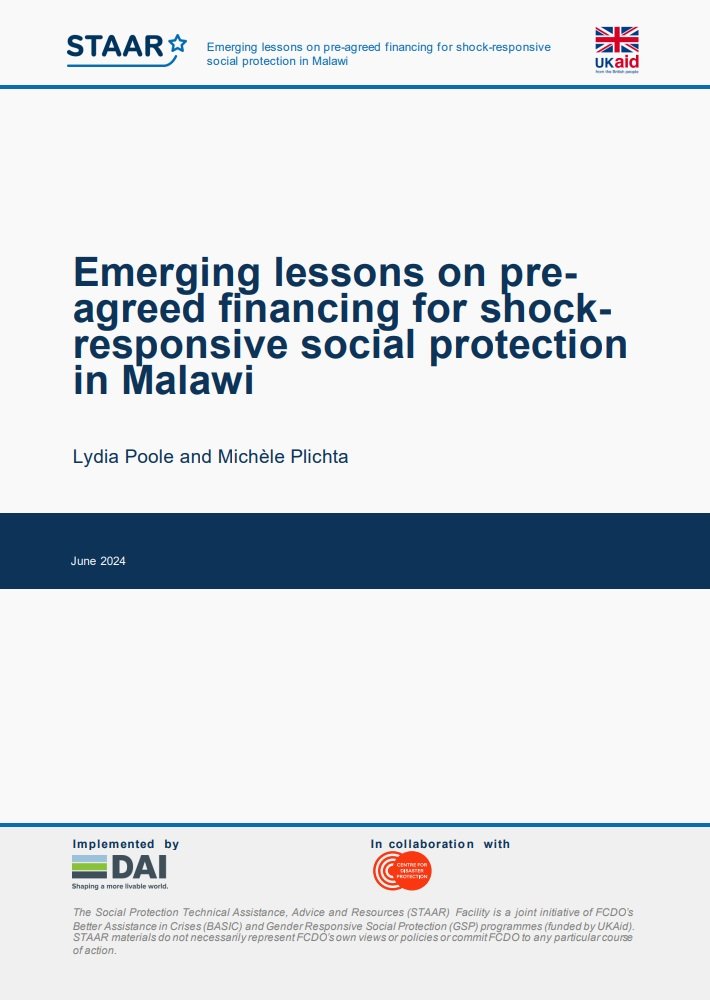
Emerging lessons on pre-agreed financing for shock-responsive social protection in Malawi
This study, conducted by the Centre for Disaster Protection in collaboration with the Social Protection Technical Assistance, Advice, and Resources (STAAR) Facility, investigates the potential opportunities, benefits and risks when linking disaster risk financing (DRF) and shock-responsive social protection (SRSP) in Malawi. The report contributes to a broader study that includes research across three country case studies (Jamaica, Malawi, and Mozambique) to consider the opportunities, potential risks, and benefits of channelling disaster risk financing instruments through national social protection systems. The focus of this report is Malawi.
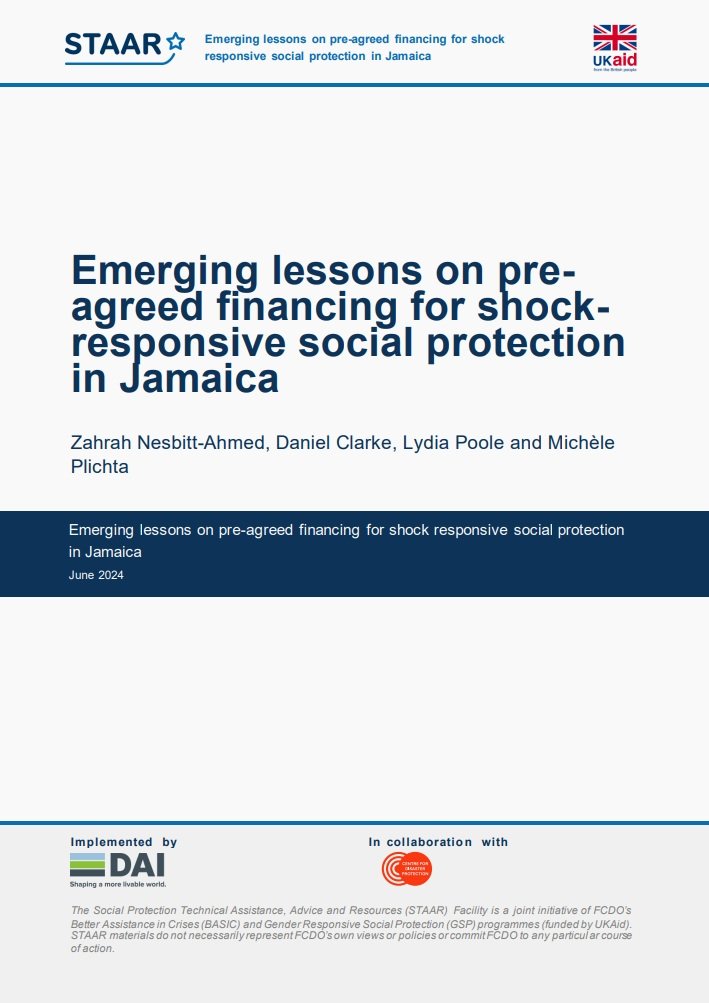
Emerging lessons on pre-agreed financing for shock-responsive social protection in Jamaica
This study, conducted by the Centre for Disaster Protection (hereafter, the Centre) in collaboration with the Social Protection Technical Assistance, Advice, and Resources (STAAR) Facility, investigates the potential opportunities, benefits and risks when linking disaster risk financing (DRF) and shock-responsive social protection (SRSP). The report contributes to a broader study that includes research across three country case studies (Jamaica, Malawi, and Mozambique) to consider the opportunities, potential risks, and benefits of channelling disaster risk financing instruments through national social protection systems. The focus of this report is Jamaica.
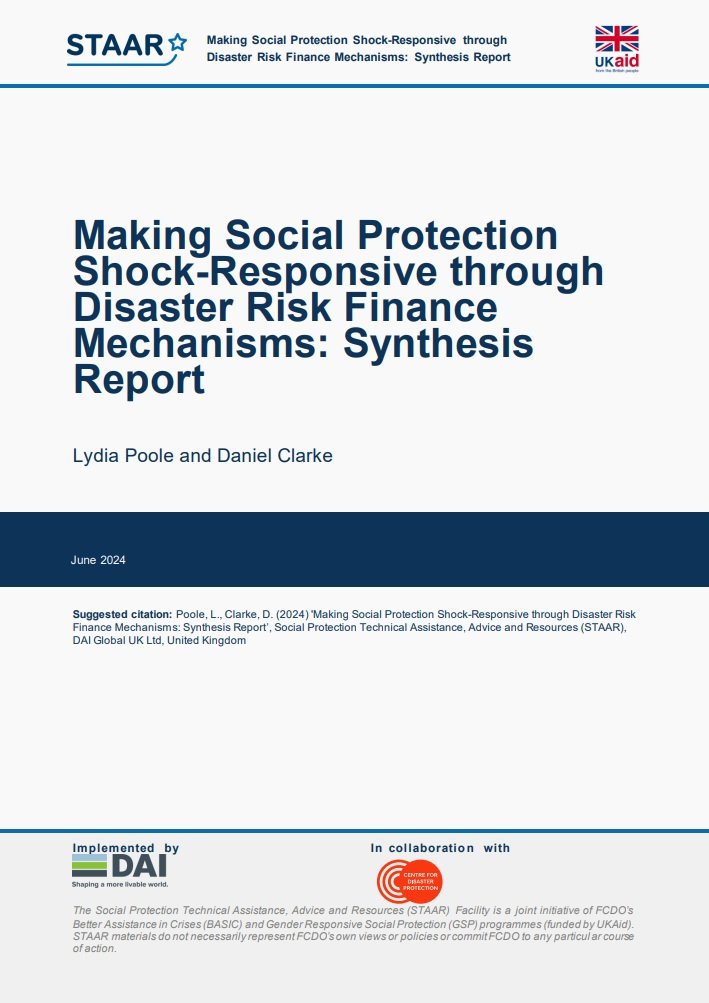
Making Social Protection Shock-Responsive through Disaster Risk Finance Mechanisms: Synthesis Report
This study, conducted in collaboration with the Social Protection Technical Assistance, Advice, and Resources (STAAR) Facility, addresses gaps in evidence on the potential to integrate disaster risk finance (DRF) and social protection systems. The research includes three case studies – Jamaica, Malawi and Mozambique. The study puts forward six lessons and 12 recommendations for donors interested in supporting this agenda.
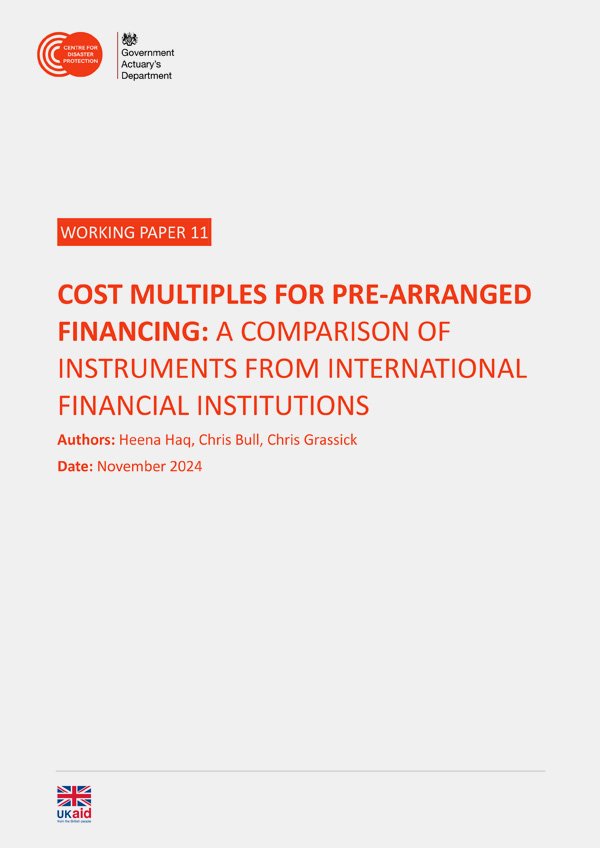
COST MULTIPLES FOR PRE-ARRANGED FINANCING: A COMPARISON OF INSTRUMENTS FROM INTERNATIONAL FINANCIAL INSTITUTIONS
With growing fiscal constraints, governments and development partners face increasing pressure to maximise the impact of every dollar spent. To address this, the UK Government Actuary’s Department and the Centre for Disaster Protection developed an analytical framework to evaluate the cost-effectiveness of various instruments offered by international financial institutions. This working paper presents a framework that compares contingent loans, grants from multilateral development banks, catastrophe bonds, and insurance provided through regional risk pools. The analysis reveals that while some instruments are more cost-effective for frequent events, others perform better for less frequent, high-impact shocks.
